Our research project this spring is an investigation of salinity effects on alewife reproduction in our marsh. Despite state stocking of alewives, a self-sustaining run has not developed. We want to learn what effect spring tides may be creating in the marsh, and whether salinity may be having an effect on alewife eggs or fry. As part of our project, we will be raising alewife eggs in our classroom. We’ll have different fish tanks set up with different salinities that include levels we are observing in the marsh. We have to have a reliable way to set up the tanks with specific salinities and keep the salinities at those levels. Thanks to the Natural Resources Council of Maine, we were able to purchase a high-quality hand-held digital salinity probe that will help us do just that.
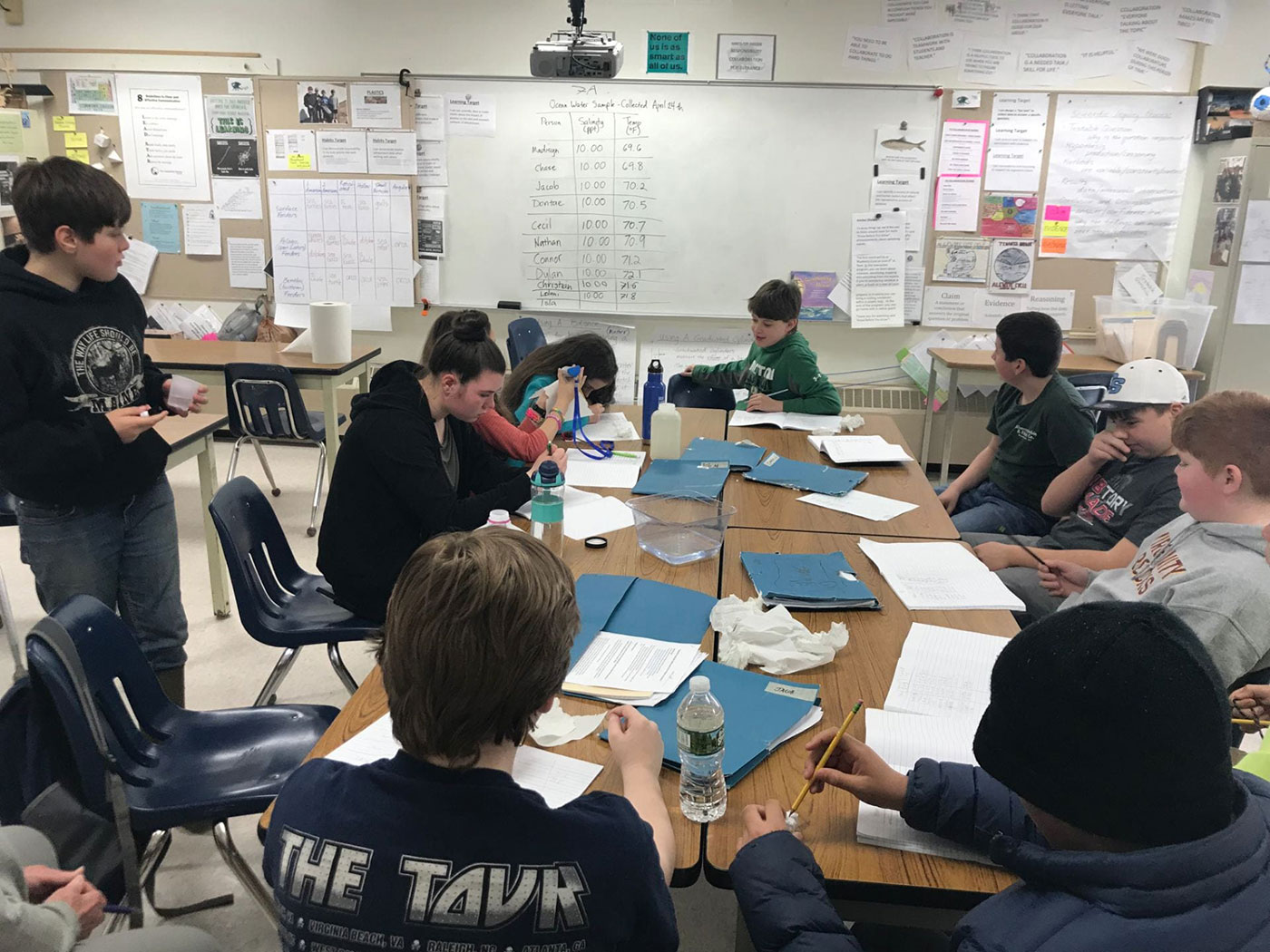
This week we learned how to use our new probe by testing the salinity of a sample of ocean water. Each person in our class was able to test the salinity of this one sample. Between each test, we used distilled water to rinse the probe, and to test the distilled water we could confirm a reading of 0 ppt before passing it to the next person. This helped us see if we were all getting the same measurement, to determine if the probe was reading accurately, and if we were all using it correctly.
We also wanted to compare the results of our hand-held probe with Bryson’s digital probe he built in the Maker Space. That probe will be put out in the marsh to monitor the actual changes to salinity happening while a spring tide is happening. By testing both digital probes, we could see if their readings agreed for the same sample!
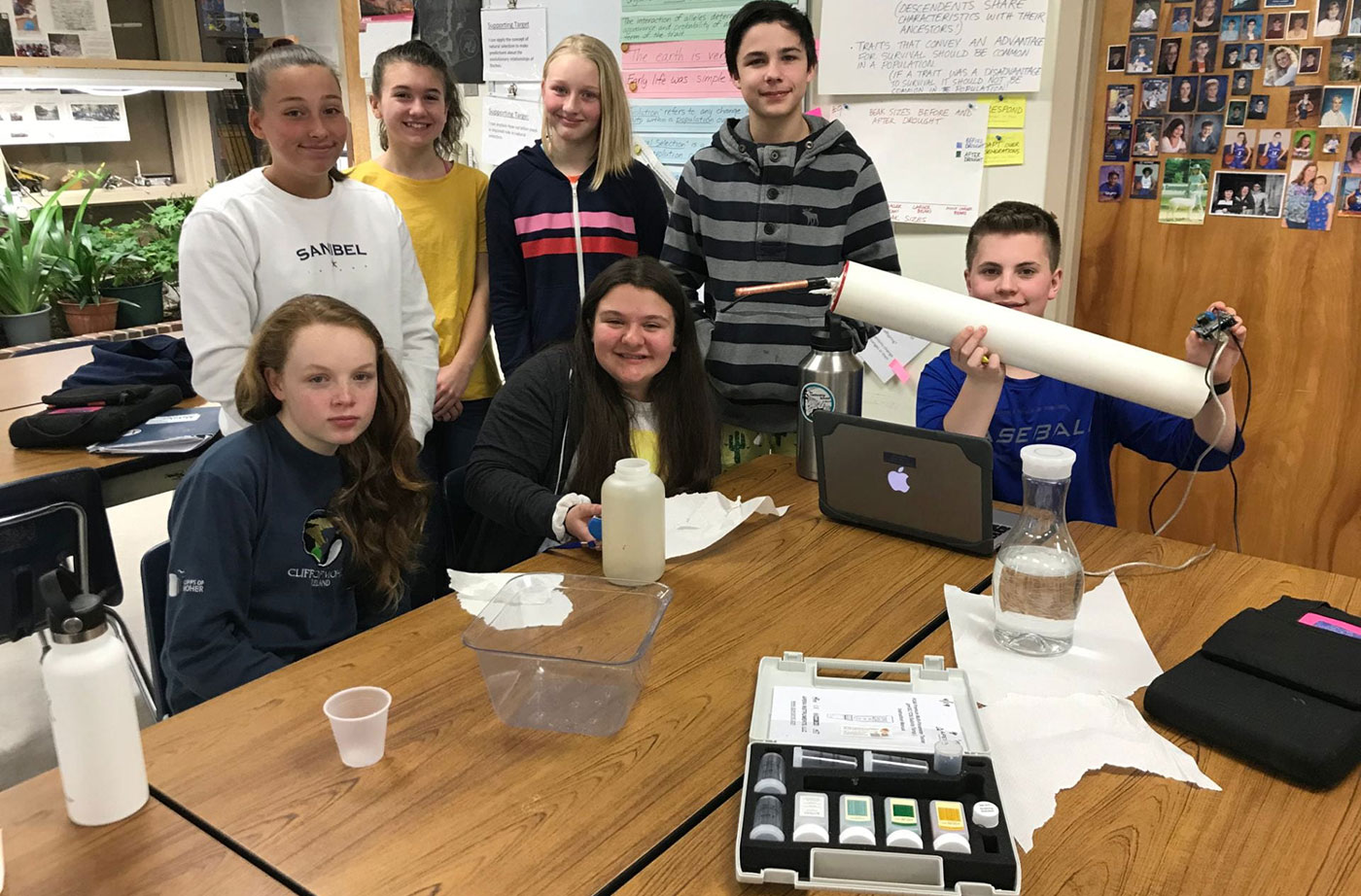
To step back from our digital equipment and better understand our local history, we recently invited a community member who also works at St. George’s School to come to our classroom and tell us his stories about catching alewives in the creek when he was a middle school student.
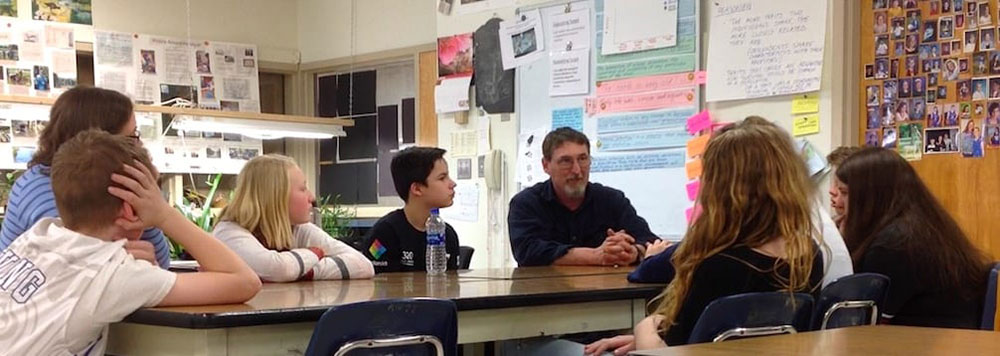
This visit gave us an understanding of the alewives that used to be a part of our community. We also heard about the sardine factory that used to be in Port Clyde, and how people were affected when it burned down and was never rebuilt. We also learned in the words of one particular student, “Everyone thought the alewives would never disappear, they would always be there. Yesterday’s visit with Randy made me think more about what the fishing industry will be like in the future.”
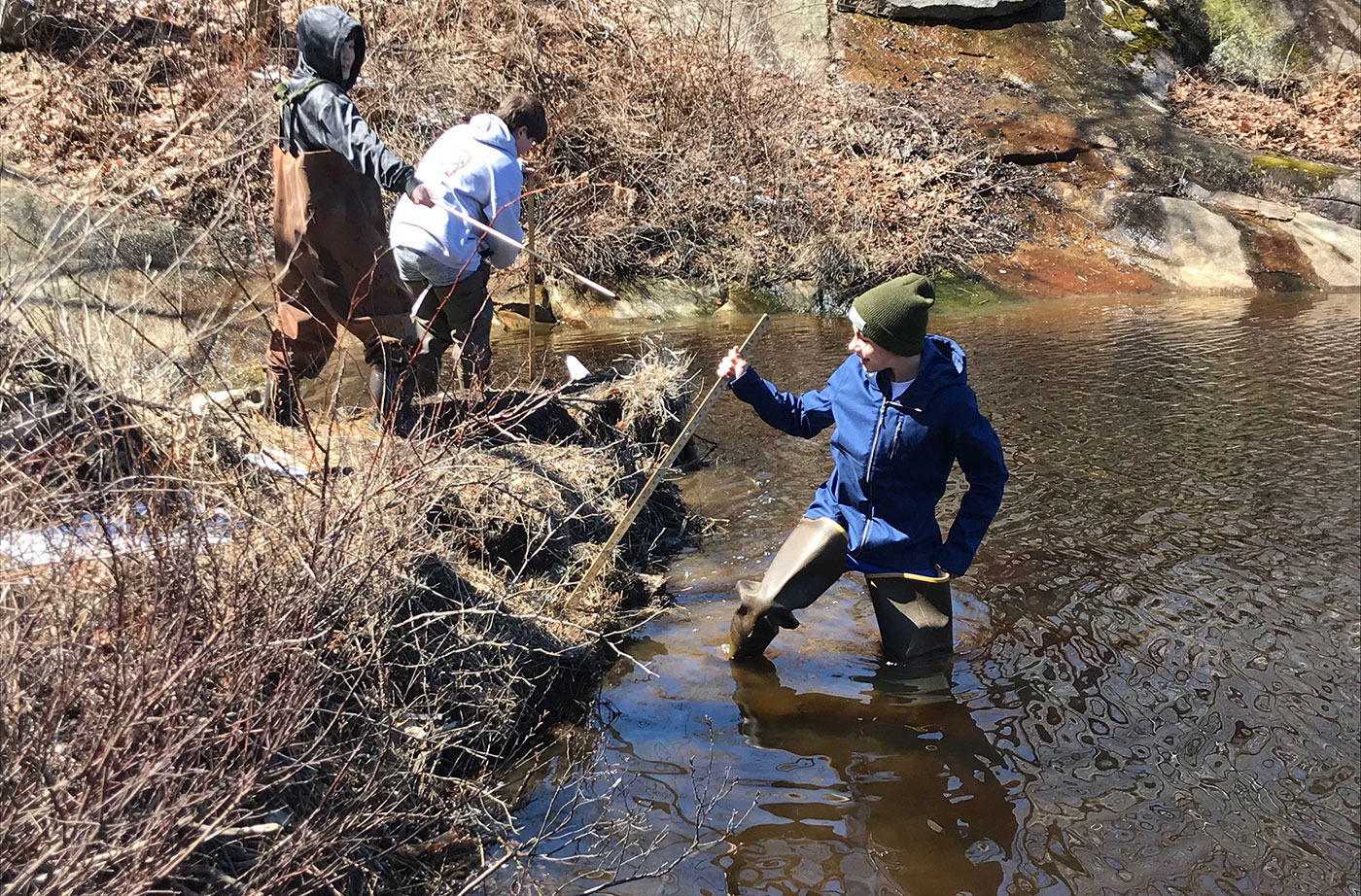
Our other activity during some nice weather was to go outdoors to consider factors we’ve been thinking about in order to decide where to place the Maker Space probe in the marsh. We walked around the edges of the marsh in our hip boots and waded into areas that had a more solid bottom to gather depth information about our site. We’ve considered where the likely spawning areas are, what the substrate is like, how deep different areas are in order to write our “Partner Proposals” and decide together on a specific location and depth to place the Make Space probe. It’s been a busy spring and we are very excited to start collecting data!
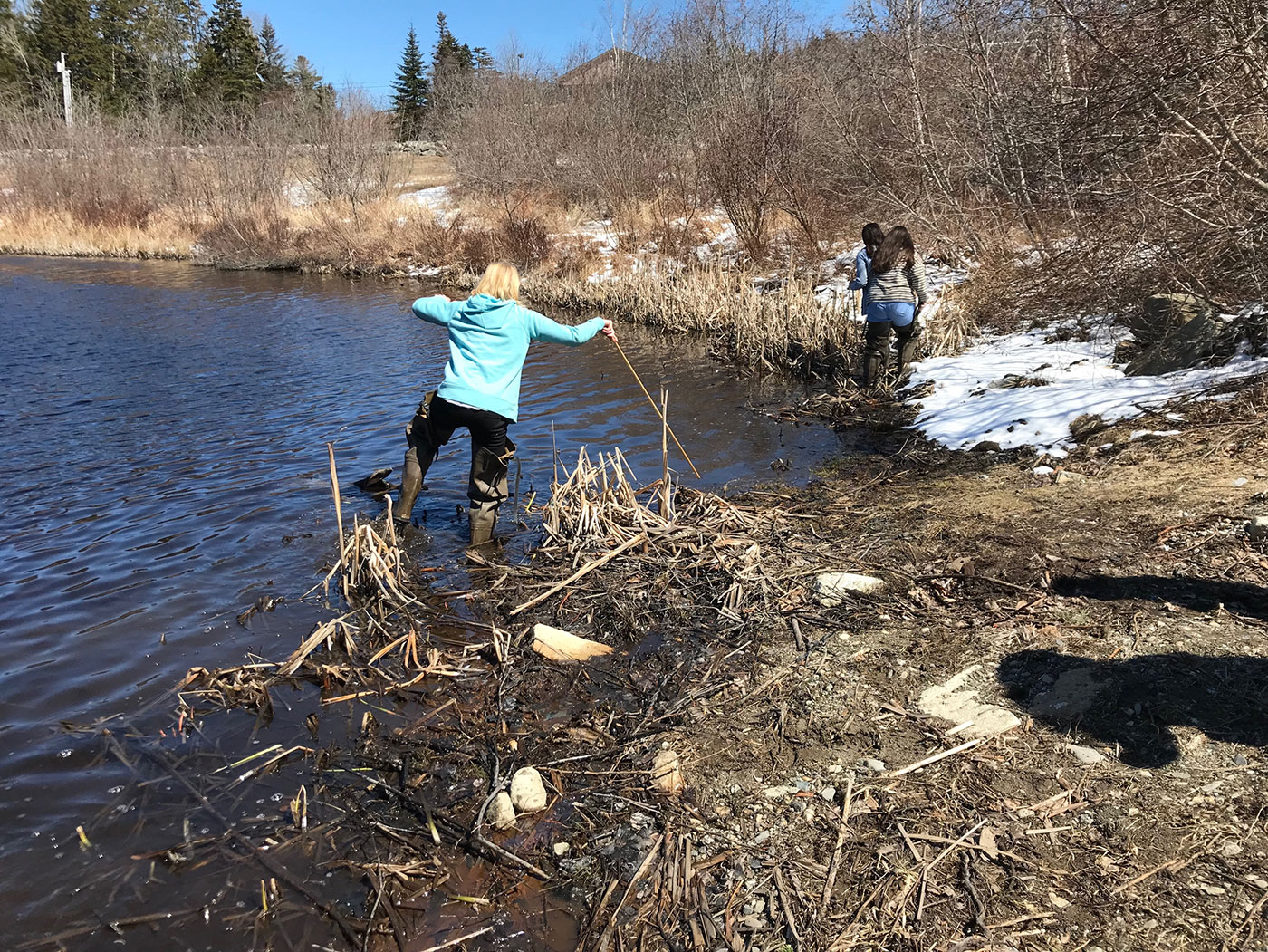
—Alison England, Science teacher at St. George School










Leave a Reply